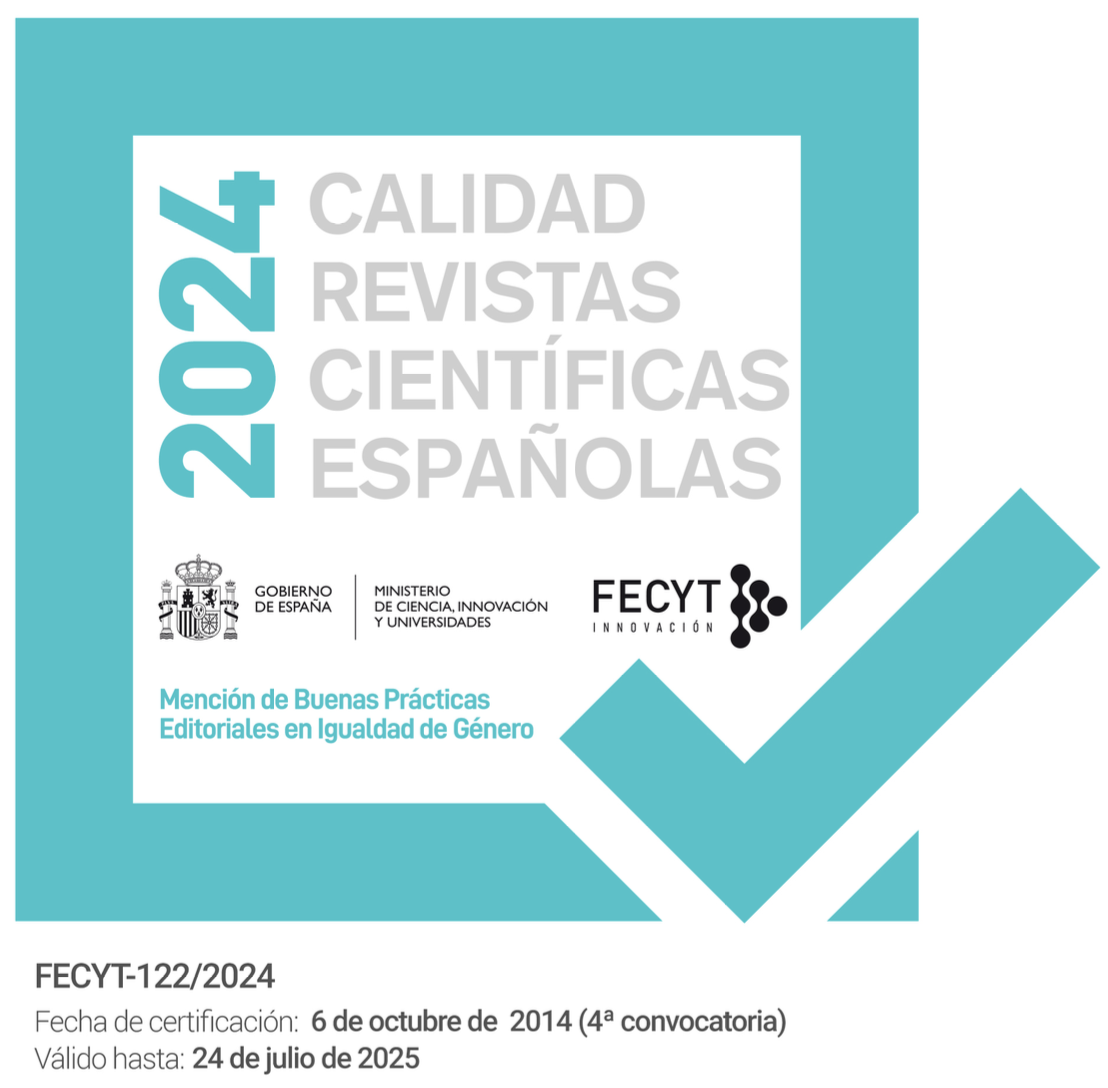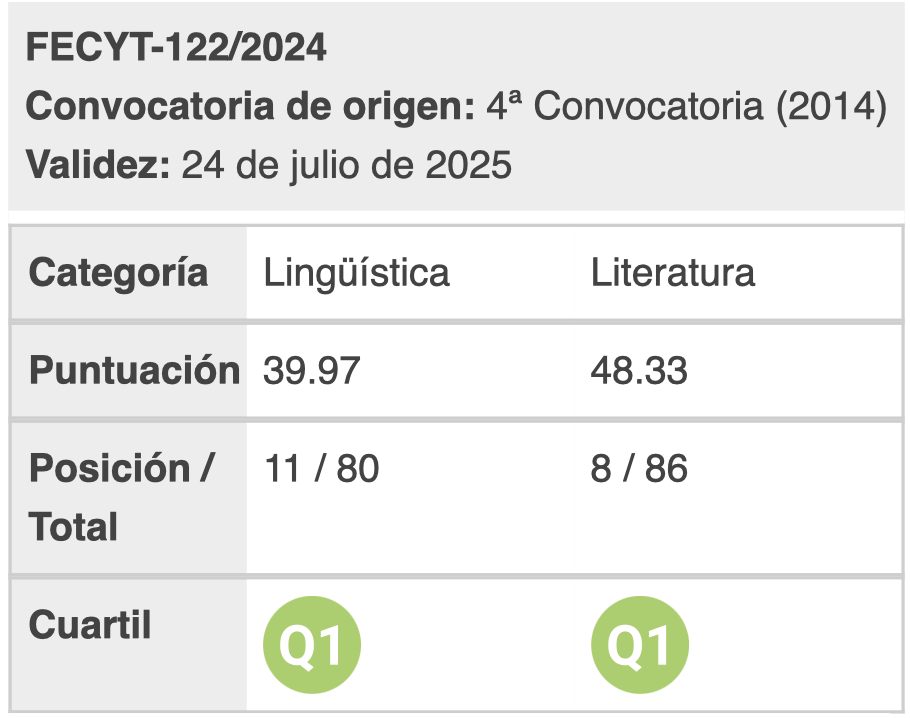From X to Y: Anatomy of a Constructional Pattern
DOI:
https://doi.org/10.28914//Atlantis-2021-43.2.02Abstract
Compositionality is undoubtedly one of the hardest problems in linguistics. In decoding theories, the speaker occupies a leading role, having to carefully choose the form that better encodes the meaning to be communicated. In contrast, in inferential theories, the burden is shifted from speaker to hearer: linguistic information typically underspecifies meaning and the hearer must make a number of inferences to bridge the gap between what is said and what is meant. In this article, I argue that constructional meaning can aid the process of sentence meaning formation by providing a scaffold that can help the hearer with the construal operations. Constructions, by providing an additional layer of meaning, constrain the range of possible meanings activated by words thereby reducing the combinatorial explosion when several words are joined together. This process is examined here by analysing the meanings associated with the grammatical construction [from X to Y], which is connected to a polysemy network of related senses, using examples extracted from a multimodal corpus. A preliminary analysis of the gesturing behaviour associated with the different senses proposed is also included, which can be seen to contribute to the characterisation of the different senses of the polysemy network.
Downloads
References
Alibali, Martha, Dana C. Heath and Heather J. Myers 2001. “Effects of Visibility between Speaker and Listener on Gesture Production: Some Gestures Are Meant to Be Seen.” Journal of Memory and Language 44 (2): 169-88.
Allen, James et al., eds. 2006. Proceedings of the Third Workshop on Scalable Natural Language Understanding. New York: Association for Computational Linguistics.
Aske, Jon et al., eds. 1987. Proceedings of the 13th Annual Meeting of the Berkeley Linguistics Society. Berkeley, CA: Berkeley Linguistics Society.
Barsalou, Lawrence W. 1983. “Ad Hoc Categories.” Memory and Cognition 11: 211- 27.
—. 1987. “The Instability of Graded Structure: Implications for the Nature of Concepts.” In Neisser 1987, 101-40.
—. 2016. “Situated Conceptualization: Theory and Applications.” In Coello and Fischer 2016, 11-37.
Bebeniec, Daria. 2012. “From Lexical to Constructional Polysemy: The Case of the From Y to Y Construction.” In Przemyslaw and Wlodarczyk-Stachurska 2012, 49-62.
Bergen, Benjamin K. and Nancy Chang. 2005. “Embodied Construction Grammar in Simulation-Based Language Understanding.” In Östman and Fried 2005, 147-90.
Boas, Hans C. and Ivan A. Sag, eds. 2012. Sign-Based Construction Grammar. Stanford, CA: CSLI.
Borkent, Michael, Barbara Danvygier and Jennifer Hinnell, eds. 2013. Language and the Creative Mind. Stanford, CA: CSLI.
Bybee, Joan. 2006. “From Usage to Grammar: The Mind’s Response to Repetition.” Language 82 (4): 711-33.
Caron, Bernard, ed. 1998. Proceedings of the 16th International Congress of Linguists. Oxford: Pergamon.
Casasanto, Daniel and Gary Lupyan. 2015. “All Concepts are Ad Hoc Concepts.” In Margolis and Laurence 2015, 543-66.
Cienki, Alan and Cornellia Muller, eds. 2008. Metaphor and Gesture. Amsterdam and Philadelphia: John Benjamins.
Clark, Herbert H. 1973. “Space, Time, Semantics and the Child.” In Moore 1973, 27-63.
Coello, Yann and Martin H. Fischer, eds. 2016. Foundations of Embodied Cognition: Perceptual and Emotional Embodiment. London and New York: Routledge.
Cooperrider, Kensy and Rafael Núñez. 2009. “Across Time, Across the Body: Transversal Temporal Gestures.” Gesture 9 (2):181-206.
Croft, William. 2001. Radical Construction Grammar: Syntactic Theory in Typological Perspective. Oxford: Oxford UP.
Fauconnier, Gilles and Mark Turner. 2008. The Way We Think: Conceptual Blending and the Mind’s Hidden Complexities. New York: Basic Books.
Fillmore, Charles J., Paul Kay and Mary C. O’Connor. 1988. “Regularity and Idiomaticity in Grammatical Constructions: The Case of Let Alone.” Language 64 (3): 501-38.
Francis, Elaine J. and Laura A. Michaelis, eds. 2003. Mismatch: Form-Function Incongruity and the Architecture of Grammar. Stanford, CA: CSLI.
Garai, Koldo and Iraide Ibarretxe-Antuñano. 2002. “From X to Y: The ‘Complete Path’ Construction in Basque.” Odense Working Papers in Language and Communication 23: 289-311.
Glenberg, Arthur M. and David A. Robertson. 1999. “Indexical Understanding of Instructions.” Discourse Processes 28 (1): 1-26.
Goldberg, Adele. E. 1995. Constructions: A Construction-Grammar Approach to Argument Structure. Chicago, IL: U of Chicago P.
—. 2003. “Constructions: A New Theoretical Approach to Language.” Trends in Cognitive Sciences 7 (5): 219-24.
—. 2006. Constructions at Work: The Nature of Generalization in Language. Oxford: Oxford UP.
—. 2013. “Constructionist Approaches to Language.” In Hoffmann and Trousdale 2013, 15-31.
Gonzálvez-García, Francisco. 2012. “La(s) gramática(s) de construcciones.” In Ibarretxe-Antuñano and Valenzuela 2012, 249-80.
Haspelmath, Michael. 2014. “On System Pressure Competing with Economic Motivation.” In MacWhinney, Malchukov and Moravcsik 2014, 197-208.
Hoffman, Thomas and Graeme Trousdale, eds. 2013. The Oxford Handbook of Construction Grammar. Oxford: Oxford UP.
Holler, Judith et al. 2018. “Processing Language in Face-to-Face Conversation: Questions with Gestures Get Faster Responses.” Psychonomic Bulletin & Review 25: 1900-1908.
Hopper, Paul. 1987. “Emergent Grammar.” In Aske et al. 1987, 139-57.
Ibarretxe-Antuñano, Iraide and Javier Valenzuela, eds. 2012. Lingüística cognitiva. Barcelona: Anthropos.
Jackendoff, Ray. 1997. The Architecture of the Language Faculty. Cambridge, MA: MIT Press.
Kay, Paul and Charles J. Fillmore. 1999. “Grammatical Constructions and Linguistic Generalizations: The What’s X Doing Y? Construction.” Language 75 (1): 1-33.
Kendon, Adam. 2004. Gesture: Visible Action as Utterance. Cambridge: Cambridge UP.
Lakoff, George. 1987. Women, Fire and Dangerous Things: What Categories Reveal about the Mind. Chicago, IL: U of Chicago P.
Lakoff, George and Mark Johnson. 1980. Metaphors We Live By. Chicago, IL: U of Chicago P.
Langacker, Ronald W. 1987. Theoretical Prerequisites. Vol 1, Foundations of Cognitive Grammar. Stanford, CA: Stanford UP.
—. 1991. Concept, Image and Symbol: The Cognitive Basis of Grammar. Berlin: De Gruyter.
—. 2003. “Constructions in Cognitive Grammar.” English Linguistics 20 (1): 41-83.
Lewandowski, Wotjak and Jaume Mateu. 2014. “A Constructional Analysis of Unselected Objects in Polish: The Case of prze-.” Linguistics 52 (5): 1195-236.
Lupyan, Gary and Molly Lewis. 2017. “From Words-as-Mappings to Words-as-Cues: The Role of Language in Semantic Knowledge.” Language, Cognition and Neuroscience 34 (10): 1319-37.
MacWhinney, Brian, Andrej L. Malchukov and Eva A. Moravcsik, eds. 2014. Competing Motivations. Oxford: Oxford UP.
Margolis, Eric and Stephen Laurence, eds. 2015. The Conceptual Mind: New Directions in the Study of Concepts. Cambridge, MA: MIT Press.
McNeill, David. 1992. Hand and Mind: What Gestures Reveal about Thought. Chicago: U of Chicago P.
—. 2000. Language and Gesture. Cambridge: Cambridge UP.
McNeill, David and Susan D. Duncan. 2000. “Growth Points in Thinking-for-Speaking.” In McNeill 2000, 141-61.
Michaelis, Laura A. 2002. “Headless Constructions and Coercion by Construction.” In Francis and Michaelis 2002, 259-310.
Moore, Timothy E., ed. 1973. Cognitive Development and the Acquisition of Language. New York: Academic Press.
Neisser, Ulrich, ed. 1987. Concepts and Conceptual Development: Ecological and Intellectual Factors in Categorization. Cambridge: Cambridge UP.
Núñez, Rafael and Kensy Cooperrider. 2013. “The Tangle of Space and Time in Human Cognition.” Trends in Cognitive Sciences 17 (5): 220-29.
Östman, Jan-Ola and Mirjam Fried, eds. 2005. Construction Grammar(s): Cognitive and Cross-Language Dimensions. Amsterdam and Philadelphia: John Benjamins.
Pagán-Cánovas, Cristóbal and Javier Valenzuela. 2017. “Timelines and Multimodal Constructions: Facing New Challenges.” Linguistics Vanguard 3 (S1): 20160087.
Pagán-Cánovas, Cristóbal et al. 2020. “Quantifying the Speech-Gesture Relation with Massive Multimodal Datasets: Informativity in Time Expressions.” PLoS ONE 15 (6): e0233892.
Port, Robert F. and Tim Van Gelder, eds. 1995. Mind as Motion: Explorations in the Dynamics of Cognition. Cambridge, MA: MIT Press.
Przemyslaw, Lozowski and Anna Wlodarczyk-Stachurska, eds. 2012. Words in Context: From Linguistic Forms to Literary Functions. Radom: Wydawnictwo Politechnika Radomska.
Pustejovsky, James. 1995. The Generative Lexicon. Cambridge, MA: MIT Press.
Santiago, Julio et al. 2007. “Time (Also) Flies from Left to Right.” Psychonomic Bulletin & Review 14: 512-16.
Sperber, Dan and Deidre Wilson. 1995. Relevance: Communication and Cognition. 2nd ed. Oxford: Blackwell.
Steels, Luc and Joachim de Beule. 2006. “A (Very) Brief Introduction to Fluid Construction Grammar.” In Allen et al. 2006, 73-80.
Steen, Francis and Mark Turner. 2013. “Multimodal Construction Grammar.” In Borkent, Dancygier and Hinnell 2013, n.p.
Stolk, Andreas, Lennart Verhagen and Ivan Toni. 2016. “Conceptual Alignment: How Brains Achieve Mutual Understanding.” Trends in Cognitive Sciences 20 (3): 180-91.
Talmy, Leonard. 2000. Concept Structuring Systems. Vol 1, Toward a Cognitive Semantics. Cambridge, MA: MIT Press.
Tomasello, Michael et al. 2005. “Understanding and Sharing Intentions: The Origins of Cultural Cognition.” Behavioral and Brain Sciences 28 (5): 675-735.
Uhrig, Peter. 2018. “NewsScape and the Distributed Little Red Hen Lab: A Digital Infrastructure for the Large-Scale Analysis of TV Broadcasts.” In Zwierlein et al. 2018, 99-106.
Valenzuela, Javier. 2017. Meaning in English. Cambridge: Cambridge UP.
Valenzuela, Javier, Joseph Hilferty and Mar Garachana. 2005. “On the Reality of Grammatical Constructions.” Annual Review of Cognitive Linguistics 3 (1): 201-15.
Valenzuela, Javier et al. 2020. “Gesturing in the Wild: Evidence for a Lateral, Flexible Timeline.” Review of Cognitive Linguistics 18 (2): 289-315.
Wharton, Tim. 2003. “Natural Pragmatics and Natural Codes.” Mind and Language 18 (5): 447-77.
Wilson, Deidre. 1988. “Linguistic Structure and Inferential Communication.” In Caron 1988, 1-20.
Zima, Elizabeth. 2017. “On the Multimodality of [All the Way from X PREP Y].” Linguistics Vanguard 3 (S1): 20160055.
Zwierlein, Anne J. et al., eds. 2017. Proceedings of the Conference of the German Association of University Teachers of English. Trier: Wissenschaftlicher Verlag Trier.
Downloads
Published
How to Cite
Issue
Section
Funding data
-
Ministerio de Ciencia, Innovación y Universidades
Grant numbers PGC2018-1551 097658-B-100 -
Agencia Estatal de Investigación
Grant numbers PGC2018-1551 097658-B-100 -
European Regional Development Fund
Grant numbers PGC2018-1551 097658-B-100








